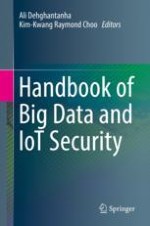2019 | OriginalPaper | Chapter
Protecting IoT and ICS Platforms Against Advanced Persistent Threat Actors: Analysis of APT1, Silent Chollima and Molerats
Authors : Samuel Grooby, Tooska Dargahi, Ali Dehghantanha
Published in: Handbook of Big Data and IoT Security
Publisher: Springer International Publishing
Activate our intelligent search to find suitable subject content or patents.
Select sections of text to find matching patents with Artificial Intelligence. powered by
Select sections of text to find additional relevant content using AI-assisted search. powered by
